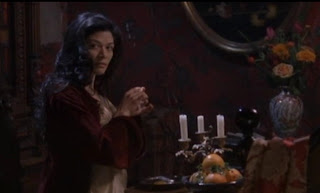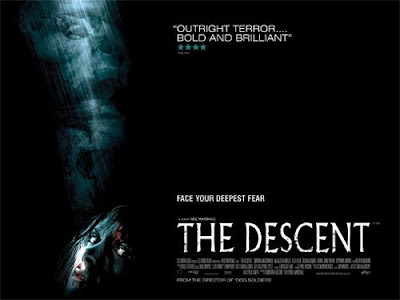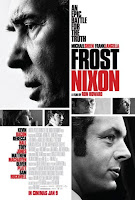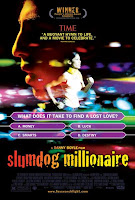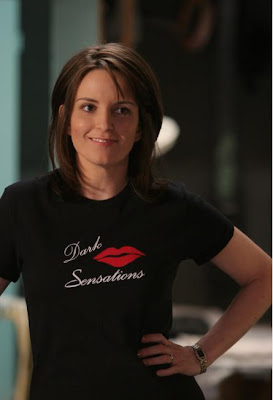 |
| Sigourney Weaver as Ellen Ripley |
When I was 10 years old, the scariest movie I ever saw was Aliens. I remember the first time I saw it like it was yesterday. Late one night, plagued with insomnia (perhaps a product of my tumultuous childhood), I heard the TV on in my mother’s bedroom. Sitting down next to her, I began watching too. My mom was watching Aliens. It was the scene where Ellen Ripley goes down the elevator, guns strapped to her, to rescue Newt. Entranced, I watched as encased in a forklift, she clashed with the Alien Queen.
But it wasn’t the gore or even the alien that mesmerized me. It was Ripley. Seeing a strong badass woman on-screen left in an indelible impression on me.
With its tense, gritty, noir atmosphere, Alien broke ground spawning numerous imitations in the horror and sci-fi genres. Set in the year 2122, crew of the freighter spaceship Nostromo answer a beacon on the planet LV-426 and encounter a terrifying and insidious creature that attempts to wipe out the crew. Eschewing some of its horror roots in favor of an action-packed bonanza, the sequel Aliens features Lt. Ellen Ripley (the superb Sigourney Weaver), the Nostromo’s sole survivor (along with Jones the cat), warning and advising a group of Marines going to LV-426 to investigate after Earth lost contact with the planet’s colonists.
For me, I can’t separate Alien and Aliens (although I pretend the 3rd and 4th don’t exist…ugh). Both amazing films possess pulse-pounding intensity, a struggle for survival, and most importantly for me, a feminist protagonist. Radiating confidence and strength, Ripley remains my favorite female film character. A resourceful survivor wielding weapons and ingenuity, she embodies empowerment. Bearing no mystical superpowers, she’s a regular woman taking charge in a crisis. Weaver, who imbued her character with intelligence and a steely drive, was inspired to “play Ripley like Henry V and women warriors of classic Chinese literature.”
Sigourney Weaver’s role as Ripley catapulted her to stardom, making her one of the first female action heroes. Preceded by Pam Grier in Coffy and Dianna Rigg as Emma Peel in The Avengers, she helped pave the way for Linda Hamilton’s badassery in T2, Uma Thurman in Kill Bill, Carrie-Anne Moss in The Matrix, Lucy Lawless as Xena, Sarah Michelle Gellar as Buffy, and Angelina Jolie in Tomb Raider and Salt. But Ripley, a female film icon, wasn’t even initially conceived as a woman.
Dan O’Bannon and Ronald Shusett, Alien’s screenwriters, wrote into the original script that all of the characters, while written as men (including “Ripley” who was originally written as “Roby”), were in fact unisex and could be cast as either women or men. While they never actually pictured Roby/Ripley as a woman, when producers Walter Hill and David Giler rewrote the final draft of the script, Ripley was indeed a woman…huzzah!
While the original and final scripts differ, particularly in that android Ash isn’t in the original, Roby and Ripley are surprisingly similar, sharing similar dialogue and eventually asserting their authority through decisive actions. Neither character wants to let the injured crewmember (Standard the Captain in the original script / Kane the Ex. O in the final draft) onto the ship as they might be infected. Although interestingly, Ripley stands her ground and doesn’t let him in while Roby caves. Also, both remain the sole survivors of the crew.
While both Alien and Aliens straddle the sci-fi/horror divide, one of the horror elements apparent in Alien is Carol Clover’s notion of the “final girl.” In numerous horror films (Nightmare on Elm Street, Halloween, The Descent), the resourceful woman remains the sole survivor, the audience intended to identify and sympathize with her. Oftentimes sexual overtones exist with the promiscuous victims and the virginal survivor. While Alien and Aliens display sexual themes (we’ll get to those in a moment), Ripley isn’t sexualized but remains the sole survivor in the first film. She’s also never masculinized as Clover suggests happens to final girls in order to survive.
So remember those sexual themes I just mentioned…well just because Ripley isn’t sexualized, doesn’t mean sexuality doesn’t play a pivotal role in Alien. Swiss artist H.R. Giger designed the alien as well as some sets for the first film with pervasive phallic and vaginal imagery (don’t believe me…take a look; you won’t be able to not see it). Alien took the horror of rape comingled with the “male fear of female reproduction” and put it in space. Rather than maniacal villains attacking women and glorifying femicide, as many horror films do, Alien showed a creature attacking men (and eventually women too). While dangerous sexual elements abound, women weren’t punished for their sexuality.
Ripley never becomes an object merely for the male gaze. In Alien, she strips down to a tank top and underwear before she enters the cryogenic chamber. But rather than objectifying, to me it seemed to symbolize her vulnerability. The alien stows away in her escape pod yet she doesn’t hesitate, immediately slipping into a spacesuit to battle the alien. The script initially intended for Ripley to sleep with Dallas the Captain. Thank god that was never filmed! We need more movies where a woman is not reduced to a sex object. Ultimately, Ripley is not defined by her relationship with a man; she defines herself.
Films rarely feature multiple women; even rarer is it to see various depictions of women. In Alien, Ripley is juxtaposed with Lambert (Veronica Cartwright). While Ripley remains calm and collected, Lambert is an emotional hot mess, unhinged by fear. Time after time, the media pits women against one another. But after initial reluctance, Ripley and Lambert in Alien and Ripley and Vasquez (fiercely played by Jeanette Goldstein) in Aliens, work cooperatively together.
Motherhood exists as a reoccurring theme in Alien and Aliens. A pivotal scene cut from Aliens reveals that Ripley had a daughter. When she returns to Earth, after being stranded in space for 57 years on the Nostromo’s escape pod, Ripley discovers her daughter recently died at the age of 66. She survives to ultimately lose her daughter. Her grief catalyses her connection with the young girl Newt (Carrie Henn). Ripley risks her life to save and protect this little girl, perhaps in an attempt to reconcile her feelings of loss. At the end of the film, Newt hugs Ripley, calling her “Mommy;” she becomes a mother again. Even in Alien, Ripley smashes the computer called “Mother” onboard the Nostromo. Interestingly in Aliens, Ripley isn’t fighting a male villain; she combats a female: the Alien Queen. While the Alien Queen doesn’t equal a human woman, it’s hard to ignore that the film portrays one mother warring against another, both protecting their children.
Of the few truly empowered female film characters, most are lioness mothers: Ripley protecting Newt, Sarah Connor fiercely protecting her son and all of humanity in Terminator and T2, The Bride/Beatrix Kiddo a vengeful mother in Kill Bill. Despite the frequent comparisons made between the two badass women warriors, there’s a crucial difference between Ellen Ripley and Sarah Connor. Connor exists solely to protect her male son from assassination or humanity will be wiped out; she possesses no other identity. While Ripley becomes a surrogate mother to Newt, her identity still remains her own, not solely contingent on another.
A feminist commentary regarding female voice confronted by sexism in society emerges in both Alien and Aliens. In Alien, Ash undermines Ripley’s authority as Warrant Officer as he lets Kane onboard, disobeying Ripley’s decision to follow protocol and quarantine him. Dallas the Captain disregards Ripley’s concerns about not trusting Ash. After Ripley uncovers Ash’s treacherous plot, he stuffs a porn magazine in her mouth, “the film’s most explicit equation of male violence with the desire to annihilate the female voice.”
In Aliens, Ripley tries to warn the Weyland-Yutani Corporation about the danger of the alien and the LV-426 colonists’ impending doom. When she travels with the Marines, they initially discount her testimony. Only when the shit seriously hits the fan do they listen, looking to her as a tactical leader to survive. A futuristic Cassandra, prophesying destruction yet no one heeds Ripley’s warning. Is it because she’s a woman? That seems to be the message. Society continually devalues women, silencing their voices.
The media inundates us with images of male protagonists so it’s refreshing to see women lead…and of course kicking ass! Living in a world dominated by patriarchy, women receive societal cues telling them explicitly and implicitly how to behave, look and speak. Social norms dictate that women should be gentle, nurturing, and caring. Subtly implied lies the assertion that women should support the men in their life, that they should not be too outspoken or too unruly.
In theory, women action heroes break that mold. But in reality, most female film characters don’t shatter gender stereotypes. They rarely lead as heroes, usually serving as props to the male protagonists, and serving as love interests. Rather than showcasing empowerment, researcher Katy Gilpatric found that women in action films ultimately succumb to stereotypical gender roles.
Under the guise of empowerment, most female film characters still play out gender norms where women serve men and stay out of the limelight. That’s what makes Ripley so unique. She subverts traditional gender roles while retaining her female identity.
In an interview in Time Magazine, Weaver talked about Ripley and film roles for women:
“Usually women in films have had to carry the burden of sympathy, only coming to life when a man enters. Doesn’t everyone know that women are incredibly strong?”
Growing up, Ellen Ripley was my role model, a fierce feminist. Alien and Aliens taught me an invaluable lesson. They showed me a woman doesn’t need a man to solve a problem or fight their battles. After recently watching the documentary Miss Representation, which exposes the ways the media objectifies and attempts to strip women and girls of their power, I realize the gravity of seeing strong, confident women on-screen who aren’t valued merely for their appearance. And therein lies the power of Ripley.
While sexist studio execs might not want a 60-year-old Sigourney Weaver to reprise her iconic role, we need more Ripleys on-screen. Weaver said that all women possess “a secret action heroine” inside them. Women don’t always know their own strength. We don’t need to be rescued or saved; we can do that on our own.
We may not live in a world with chest-bursting aliens bleeding acid for blood. But anyone can aspire to be Ellen Ripley.
…
Megan contributed reviews of The Girl with the Dragon Tattoo, The Girl Who Played with Fire, The Girl Who Kicked the Hornet’s Nest, Something Borrowed, !Women Art Revolution, The Kids Are All Right (for 2011 Best Picture Nominee Review Series), The Reader (for 2009 Best Picture Nominee Review Series), Game of Thrones and The Killing (for Emmy Week 2011), and Women, War and Peace’s I Came to Testify. She was the first writer featured as a Monthly Guest Contributor.










